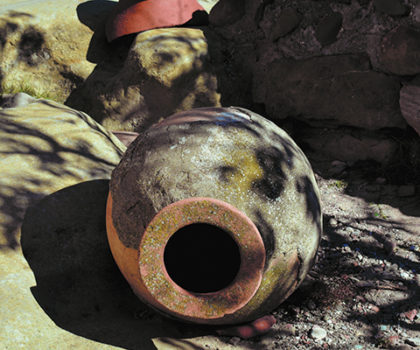The reinvention of ancient winemaking

By Mary Malik
Everything old is new again, even in wine fermentation. If you take a winery tour this summer you might notice a gray, egg-shaped vessel among the more common shiny stainless-steel tanks. But according to Jim Sperk of the Northern Ohio Wine Guild, these new and trendy egg-shaped fermenters are actually a modern reimagining of an ancient winemaking method.
“In Eastern Europe, similar vessels called qvevri were in use 8,000 years ago,” says Jim. “These vessels were buried underground for this winemaking process. In some locations, those same ancient vessels are still in use today. The more modern version of the egg-shaped vessel is called an amphora and it is oblong in shape. It had been produced by a French company for about 100 years.”
Jim says the fermenters can be made of concrete, terracotta or ceramic. The semi-porous nature of these materials allows micro-oxygenation of the fermenting wine inside and less aging when compared to stainless-steel tanks.
“Wines exposed to low levels of oxygen develop more mouthfeel,” says Jim. “And the egg shape of these vessels, with no sharp corners and a smooth interior surface, is important as the fermentation progresses. As alcohol is produced, the lighter portion rises and the heavier portion falls creating a vortex or convention current. This vortex causes yeast to stay suspended throughout the wine, increasing flavor and texture.”
Jim recommends tasting the wines made in an amphora if you get the chance and enjoying the distinct difference.
For information on the Northern Ohio Wine Guild, contact Jim Sperk at tinymoonwines@usa.net.
